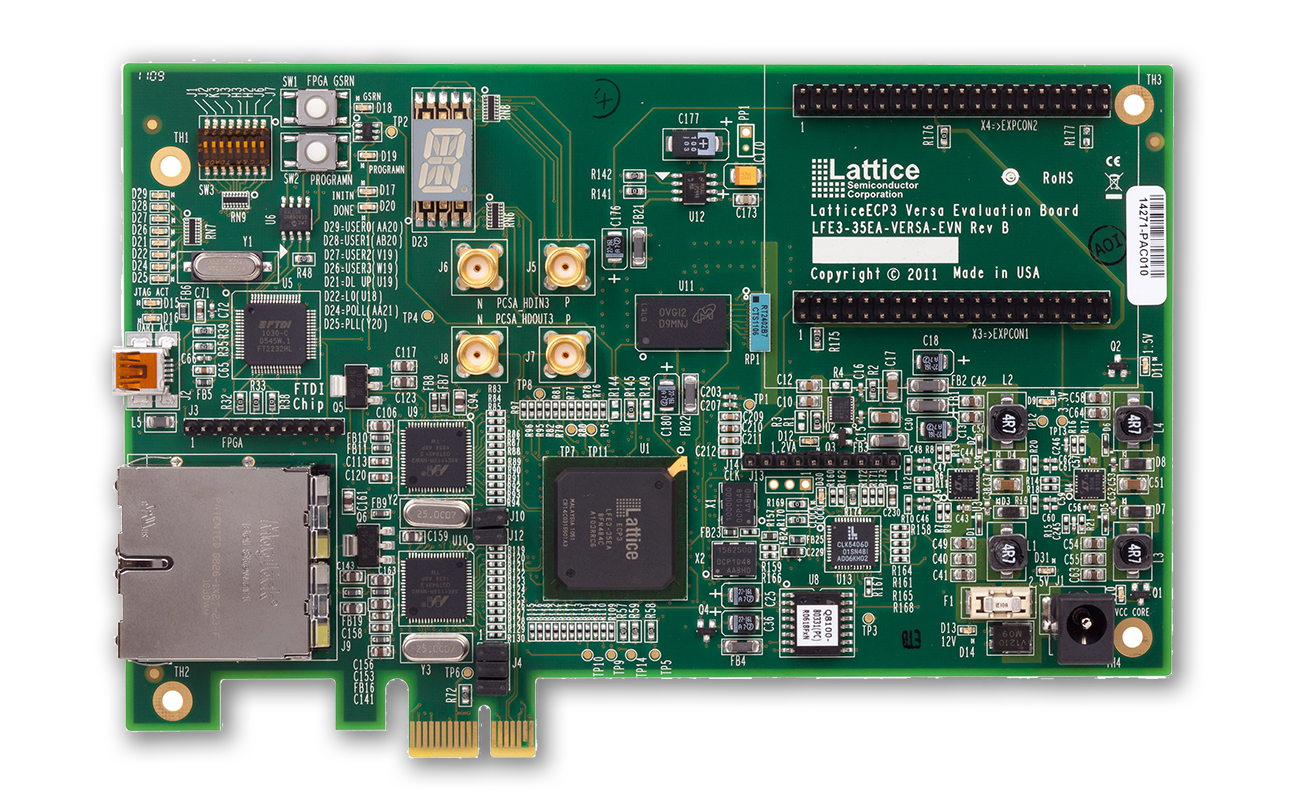Time: 2025-04-11 11:30:03View:
The Lattice ECP3 FPGA family provides several security features to protect design intellectual property (IP) and prevent unauthorized access. Here's a detailed breakdown of its encryption methods and security mechanisms:

Algorithm: AES-256 (Advanced Encryption Standard, 256-bit key)
Purpose: Protects the configuration file (*.bit) from reverse engineering.
Workflow:
User generates a 256-bit AES key (stored in a secure key file).
The Lattice Diamond/Primary tool encrypts the bitstream using this key.
The encrypted bitstream is loaded into the FPGA.
The FPGA decrypts the bitstream internally during configuration.
Key Storage Options:
Volatile (SRAM-based): Key is lost on power-off (must be reprogrammed).
Non-volatile (Flash-based, ECP3 only): Key is stored in embedded Flash (eFPGA variants like ECP3-70EA).
External Battery-Backed SRAM (BBRAM): Optional for key retention.
Encrypted SPI Flash Boot:
The FPGA reads an encrypted bitstream from an external SPI Flash.
Decryption occurs on-the-fly during configuration.
JTAG Disable Feature:
Permanently disable JTAG after programming to prevent debug port attacks.
Tamper Detection (Limited):
Some ECP3 devices support configuration integrity checks.
User Key: Generated via Lattice tools or OpenSSL.
Key Protection:
Keys are never stored in plaintext in the bitstream.
For non-volatile storage (e.g., ECP3-70EA), keys are physically secure (no external readback).
No Public Key (PKI) Support: ECP3 relies solely on symmetric AES-256.
No DPA (Differential Power Analysis) Resistance: Vulnerable to side-channel attacks if keys are exposed.
Legacy Device: Newer Lattice FPGAs (e.g., Certus-NX) offer enhanced security (e.g., dual-boot, PKI).
Generate AES Key:
openssl rand -hex 32 > ecp3_key.txt
Encrypt Bitstream:
In Diamond:
Tools → Bitstream Encryption → Specify AES key file.
Program FPGA:
Select Encrypted SPI Flash mode.
Ensure JTAG is disabled post-programming.
| Feature | Lattice ECP3 | Xilinx 7-Series | Intel (Altera) Cyclone 10 |
|---|---|---|---|
| Encryption | AES-256 | AES-256 | AES-256 |
| Key Storage | Flash/SRAM | BBRAM/Flash | eFuse/BBRAM |
| PKI Support | ❌ No | ✔️ Yes (Zynq) | ✔️ Yes (Stratix 10) |
| JTAG Lock | ✔️ Yes | ✔️ Yes | ✔️ Yes |
Use Non-Volatile Key Storage (e.g., ECP3-70EA) to prevent key loss.
Disable JTAG after deployment.
Physically Secure the FPGA/Flash to prevent tampering.
For high-security apps, consider newer Lattice MachXO3D or Certus-NX with PKI.
Multi-Layer Encryption Framework
Implements AES-256 in CBC (Cipher Block Chaining) mode
Uses 128-bit blocks with PKCS#7 padding scheme
Hardware-accelerated decryption engine operates at 1.6 Gbps throughput
Key Provisioning System
Supports three-tier key hierarchy:
Master Key (factory-programmed, unique per device)
Session Keys (volatile, for temporary configurations)
User Keys (primary encryption keys)
Advanced Tamper Protection
Voltage/frequency monitors for active tamper detection
Configurable auto-erase of sensitive registers on tamper events
Temperature drift sensors to detect physical attacks
Secure Boot Process
3-stage authentication chain:
Header signature verification (SHA-256 HMAC)
Configuration metadata validation
Payload decryption and integrity check
Anti-Cloning Features
Device-specific DNA (64-bit unique identifier)
Obfuscated key loading sequence
Dynamic clock randomization during decryption
For optimal security:
Always generate keys using TRNG (True Random Number Generator)
Implement key rotation every 10,000 configurations
Use the "Secure Update" mode for field upgrades
Combine encryption with bitstream compression to hide patterns
FIPS 140-2 Level 2 compliant when using -70EA series
Common Criteria EAL4+ certification available
Meets AEC-Q100 for automotive security
Encryption overhead: <5% additional configuration time
Power consumption: 12mA extra during secure boot
Area impact: ~800 LUTs for security subsystems